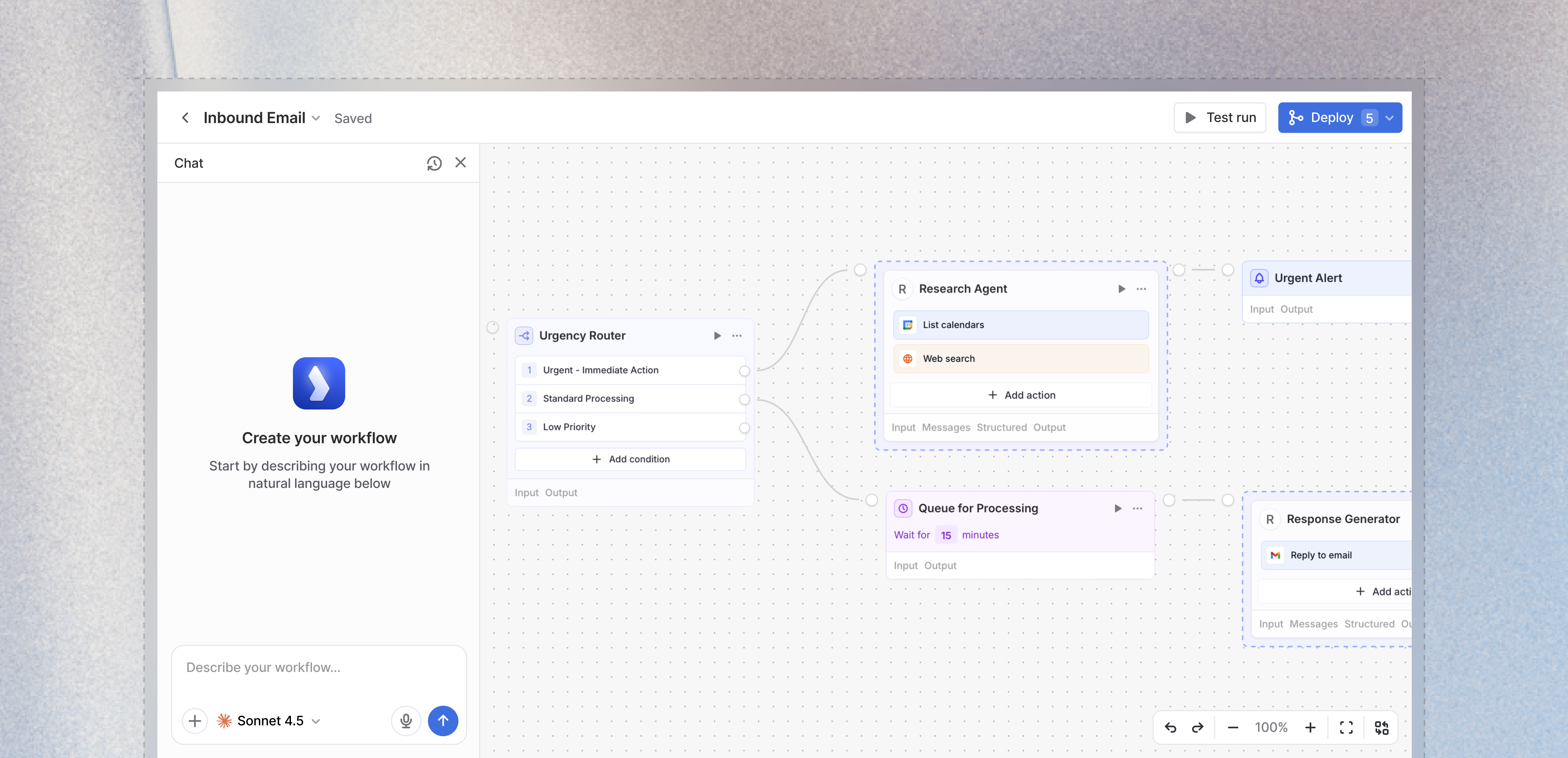
What are Workflows?
Workflows are the next evolution in your Langdock journey. You’ve already experienced the power of Chat for interactive conversations, Assistants for specialized AI helpers, and Integrations for connecting your tools. Workflows brings all of these together into end-to-end automations. Think of Workflows as your orchestration layer - where you can chain multiple steps together, add conditional logic, loop through data, and create sophisticated automations that run automatically. Whether triggered by a form submission, a schedule, or an event in your connected apps, Workflows handle complex, multi-step processes from start to finish.Why Workflows?
More Powerful Than Chat
While Chat is perfect for interactive Q&A, Workflows automate entire processes without human intervention. Set them up once, and they run reliably 24/7.More Flexible Than Assistants
Assistants are great for specific tasks, but Workflows let you combine multiple AI agents, add custom logic, integrate with external APIs, and create sophisticated decision trees.More Than Integrations
Integrations connect your apps, but Workflows orchestrate complex workflows across those apps - with AI at every step to analyze, decide, and adapt.Ready to Get Started?
1
Build Your First Workflow
Follow our quickstart guide to create a working automation in 5 minutes Get
Started →
2
Learn the Fundamentals
Understand how nodes, triggers, and execution work Read Core Concepts
→
3
Explore Node Types
Discover all available nodes and what they can do View Triggers
→
Explore by Category
Quickstart Guide
Build your first workflow in 15 minutes
Core Concepts
Learn the building blocks of workflows
Field Modes
Understand how to use static values and dynamic variables
Human in the Loop
Add manual approval steps to your workflows
Variable Usage
Learn how to reference data between nodes
Cost Management
Monitor and control workflow spending
Workflows must be activated by an admin in workspace settings. Usage may need a subscription upgrade and will consume AI credits. Set cost limits and enable monitoring to control spending. Learn more in Cost
Management.